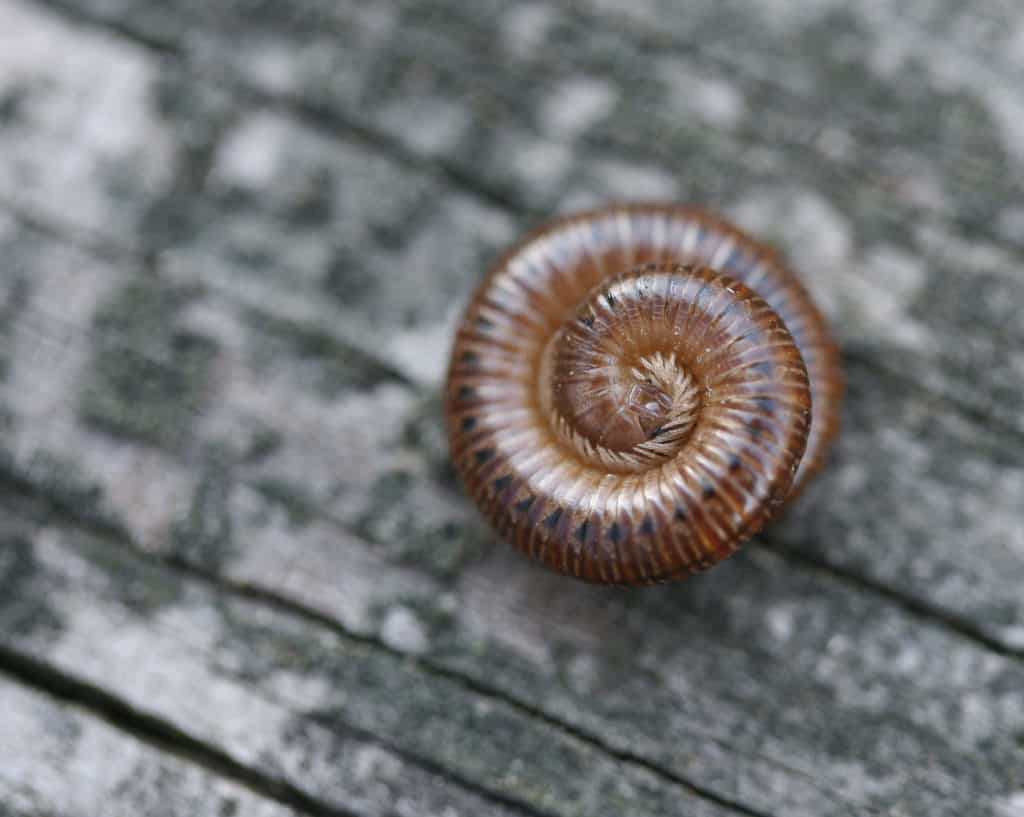Creature Feature

The Many Legs of a Millipede
By Wayne Bierbaum
This weekend, I prepared a small brick platform for a small grill. As I moved a brick, the space between it and the next one was filled with spiral-shaped creatures that rolled out onto the dirt. Only one unrolled to reveal its many legs.
Millipedes are a quite common arthropod and although the name implies 1,000 legs, none of the species have that many. The ones that I found appeared to have around 80 segments, so two pairs of legs per segment. As the creature moves, each pair of legs moves forward sequentially like a wave. Several waves move at the same time and the compression and expansion of the steps is so orderly it is mesmerizing to watch. They eat live and decaying vegetation and spend most of their life resting, curled-up under something like a log. Our common millipede can live several years and can grow over two inches long.
Millipedes are not considered dangerous. Some do have irritating hairs or release noxious substances when stressed, but they do not bite. However, their cousin the centipede is predatory and has a venomous bite. To tell the difference, centipedes have widely spaced legs and move quickly. They also have an obvious head with large antennae and large pinching mandibles. Millipedes have an indistinct head with tiny antennae and hard to find mouth parts.
Although millipedes are not dangerous, they can be destructive to emerging crops. They will eat tender shoots and damage stems. Because they spend most of their life hiding, one way to control them is to remove objects they can hide under. They do not move quickly and do not have much of a range so there are rarely sudden infestations. They will try to enter houses in the fall but good entry seals will keep them out and they cannot survive without access to moisture.
If you see a creature with many legs, make sure it is not a centipede before you try to pick it up.
